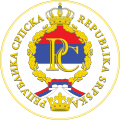Sarajevo
In 1993, the Law on the Serb City of Sarajevo during the State of War or Immediate Danger of War [2] was adopted providing that Serb Sarajevo (later Istočno Sarajevo) consisted of the following municipalities: Centar, Hadžići, Ilidža, Ilijaš, Novo Sarajevo, Stari Grad, Rajlovac, Vogošća, and Trnovo. Ilidža, Hadžići, Ilijaš, Rajlovac, and Vogošća were incorporated into the Federation of Bosnia and Herzegovina. The city now consists of the following six municipalities: Srpska Ilidža (name replaced by "Kasindo" in 2004), Srpsko Novo Sarajevo (name replaced by "Lukavica" in 2004), Pale, Sokolac, Srpski Stari Grad (name replaced by "Istočni Stari Grad" in 2004), and Trnovo.
In 1996, the name "Serb City of Sarajevo" was changed to "City of Srpsko Sarajevo". In 2004, the Constitutional Court of Bosnia and Herzegovina decided that the temporary name of the city would be decided that the former name of the city "be temporary replaced" with the name "City of Istočno (East) Sarajevo".


